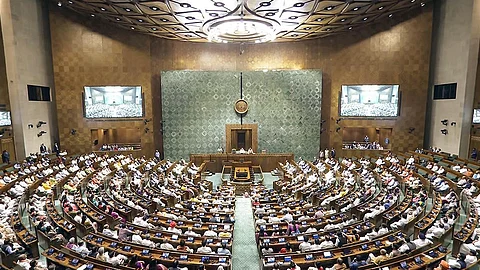How can an outsider visit a session of the Indian Parliament? Step-by-step guide
India's parliament, the nation's bastion of democracy, is a closely guarded institution. Yet for those wishing to experience firsthand the legislature in action, there is a formal and organized way of attending sessions within parliament, albeit with proper sanction and after having passed the most strict security protocols.
Recently, over 70 students and alumni of LPU paid a visit to a session of the Indian Parliament at New Delhi. The visit, arranged by Dr. Ashok Kumar Mittal (Rajya Sabha MP and LPU Chancellor). The visit provided students with an experience of parliamentary functioning firsthand, such as watching a live session of Rajya Sabha and interacting with eminent political leaders.
This visitor and student have all wondered how an outside individual, whether citizen, visiting student delegation, or lone fan, can visit a session in the Lok Sabha or Rajya Sabha chambers. Here is a step-by-step walkthrough of the process according to the current rules managed by the Parliamentary Secretariat and the Lok Sabha Speaker's office:
1. Passes are issued on the nomination of a Member of Parliament (MP)
One cannot walk into the Parliament House himself/herself. Visits to the public galleries during sessions are permitted only on the recommendation of sitting MPs. The MP needs to provide a request along with complete details of the visitor, including name, age, address, photograph, and ID (Aadhar card or passport in the case of foreigners).
2. Advance application and verification
The sponsoring MP should have to apply in advance for visitor passes no less than three working days before the proposed visit date. This advance period allows the Parliamentary security and administrative personnel to conduct background checks and character vetting, typically by means of local or state police forces.
3. Limited number of passes and stringent seating capacity
Due to limited seating capacity in Lok Sabha and Rajya Sabha visitor galleries, passes are made available on a first-come-first-served basis. Four visitors may be sponsored by an MP on an average per day during a session. Same-day passes and group passes were discontinued because of security reasons.
4. Decorum on the day of visit
Guests must carry with them the QR code they received with approval and original identification proof. Once they arrive at the Parliament House's South Utility Reception, visitors undergo various security scans, photographs for the Smart Visitor Gallery Card issuing, and must comply with strict decorum like no taking of photographs inside the chambers.
5. Entry and exit procedure
Visitors can only enter through authorized gates and need to use their Smart Visitor Gallery Card to proceed through electronic flap barriers on the way to the galleries. At the end of their visit, the card must be returned to security personnel; refusal will lead to a penalty being excluded from Parliament.
Speaking on the importance of public engagement, it is believed that Parliament maintains the highest standards of security as it encourages citizens to visit through proper channels to understand the democratic process better.
This well-structured procedure balances transparency and security, enabling civic-minded citizens to experience the heart of India’s democracy firsthand while safeguarding the Parliament from any untoward incidents.
so the present formal procedure and security protocols to be adopted by outsiders to observe parliamentary sessions in India. It emphasizes both the process steps and the democratic spirit.

